I hadn't counted on Almería being quite so different. It has some lovely parts, but ¡joder! it's bleak! In every direction, the sun glistened on nothing but seas of white. 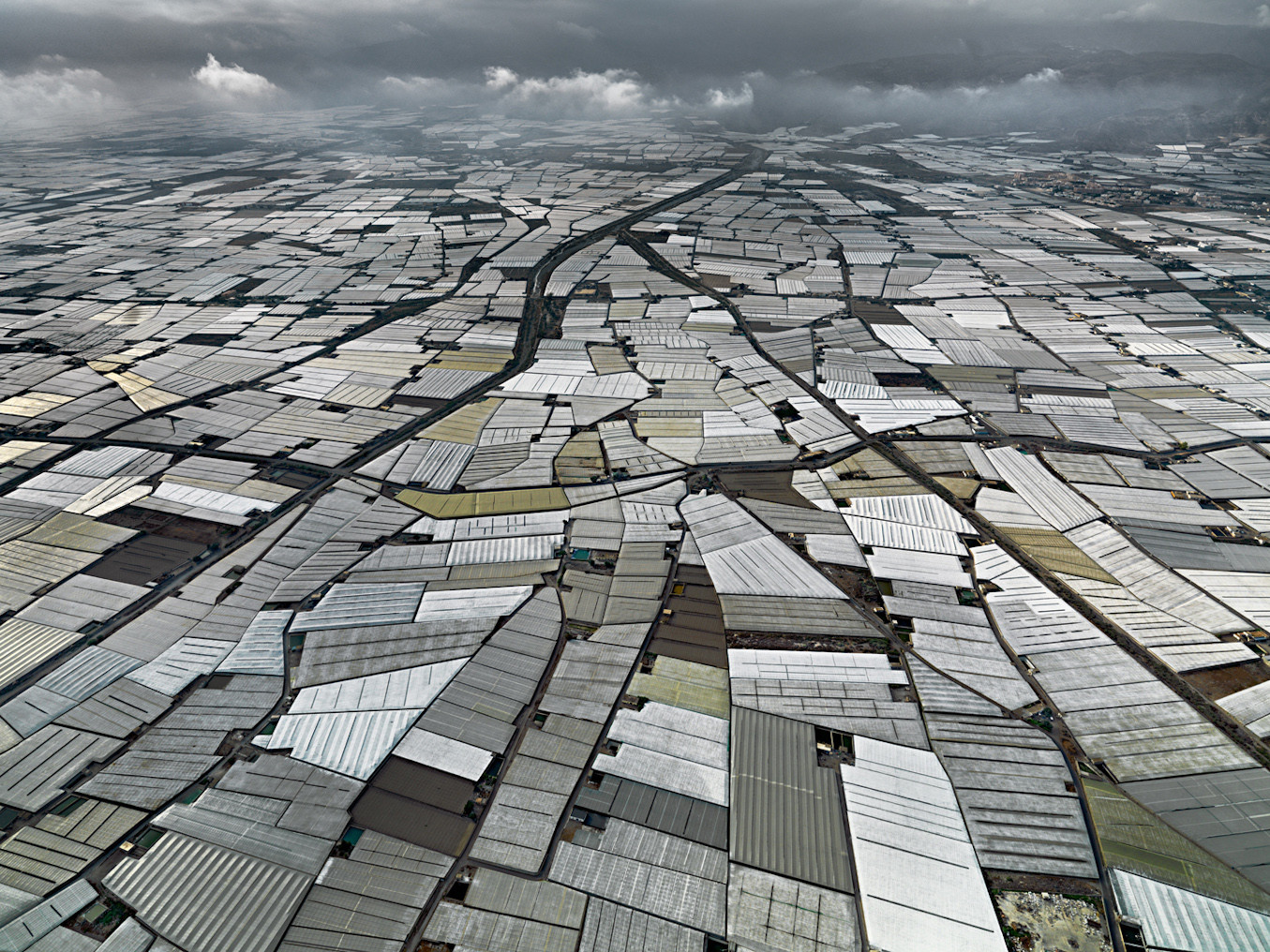 White plastic poly-tunnels, stretching further than could be imagined. A hundred miles, just poly-tunnels.
White plastic poly-tunnels, stretching further than could be imagined. A hundred miles, just poly-tunnels.
Some orderly, with processing factories breaking the monotony, and mini shanty towns for the immigrant workers. Others shambolic, with tattered plastic walls and tops, subsistence farming for a family, in the middle of mass production. Not dissimilar to what I'd seen over the Zafarraya Pass, but seriously, they go on forever in Almería.
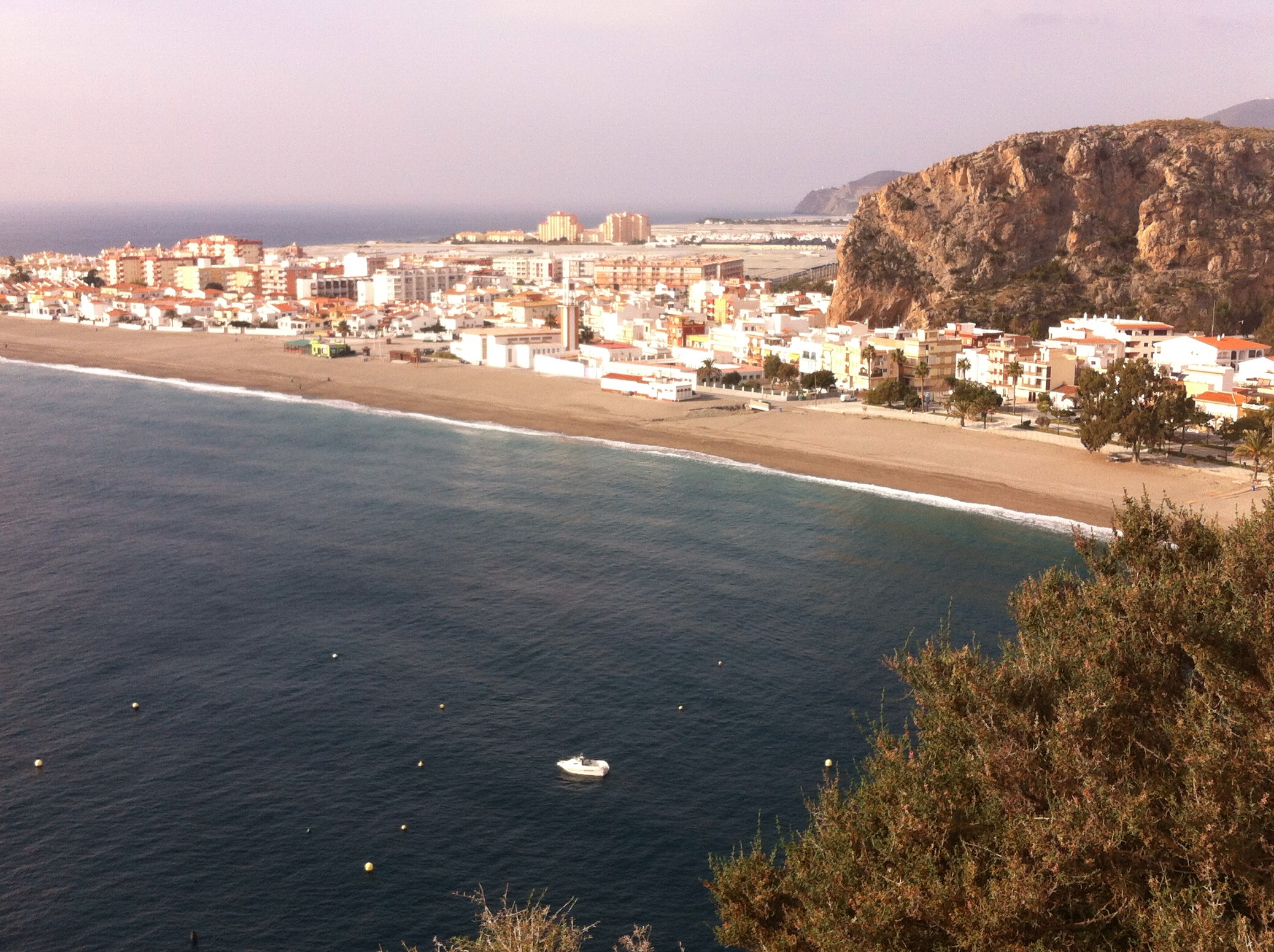 I stopped for lunch in Roquetas del Mar. It's a strange place of two halves - by the seafront and on the main street a sea of white faces, owners of holiday apartments, groups of older people taking advantage of the winter all-inclusive rates. A kilometre or two back from the sea and the poly-tunnels begin again, and driving is precarious as you skirt a river of black men on pushbikes, cycling between their crowded accommodation and the fields or canning plant, swerving around the potholes. Whether the two halves mingle anywhere is unclear, unlikely.
I stopped for lunch in Roquetas del Mar. It's a strange place of two halves - by the seafront and on the main street a sea of white faces, owners of holiday apartments, groups of older people taking advantage of the winter all-inclusive rates. A kilometre or two back from the sea and the poly-tunnels begin again, and driving is precarious as you skirt a river of black men on pushbikes, cycling between their crowded accommodation and the fields or canning plant, swerving around the potholes. Whether the two halves mingle anywhere is unclear, unlikely.
On to Cabo de Gata. The map is confusing - it seems to me that the road is closed after the lighthouse. A question in a bar confirms it, that after the visit I will have to go an hour's drive around, to reach a point just a few kilometres away over the hill. I head towards the narrow mountain road to the lighthouse, but on a bend I am met with a sea of white camper-vans all parked up beside the road. A Guardia Civil police officer flags me down and explains that the road is closed. Confused, I say that I knew that, but surely I could get as far as the lighthouse? No, completely closed, he explains, due to roadworks, but it will open at 4pm. He can see my frustration and indecision. "It's worth it", he smiles - "It's REALLY pretty!"
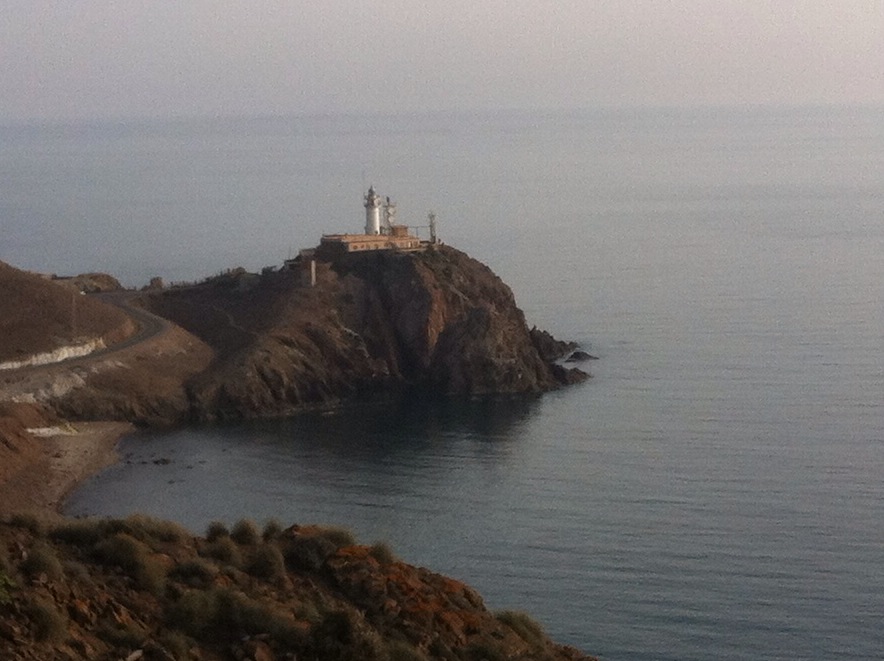 Back to the bar for another coffee to wait out the half hour. Bang on four I head back up. My friendly GC officer is still there but this time waves me through. He's right, it IS worth the effort. The lighthouse is functional rather than pretty, but it is a dramatic spot - stark volcanic hills behind, rocky cliffs and a sea of white-topped waves.
Back to the bar for another coffee to wait out the half hour. Bang on four I head back up. My friendly GC officer is still there but this time waves me through. He's right, it IS worth the effort. The lighthouse is functional rather than pretty, but it is a dramatic spot - stark volcanic hills behind, rocky cliffs and a sea of white-topped waves.
I turn back and wind down again, and follow the sat-nav inland and eastwards. The hotel to which I am heading is remote, and gave its situation in Westings and Northings, minutes and seconds. I was accustomed to those when hill-walking with maps and compass, but it took me a while to work out how to put these numbers into the Tom-Tom. When the sat-nav lady with the appalling pronunciation of Spanish place-names delivered me straight to the front door and into the small car-park, I was impressed.
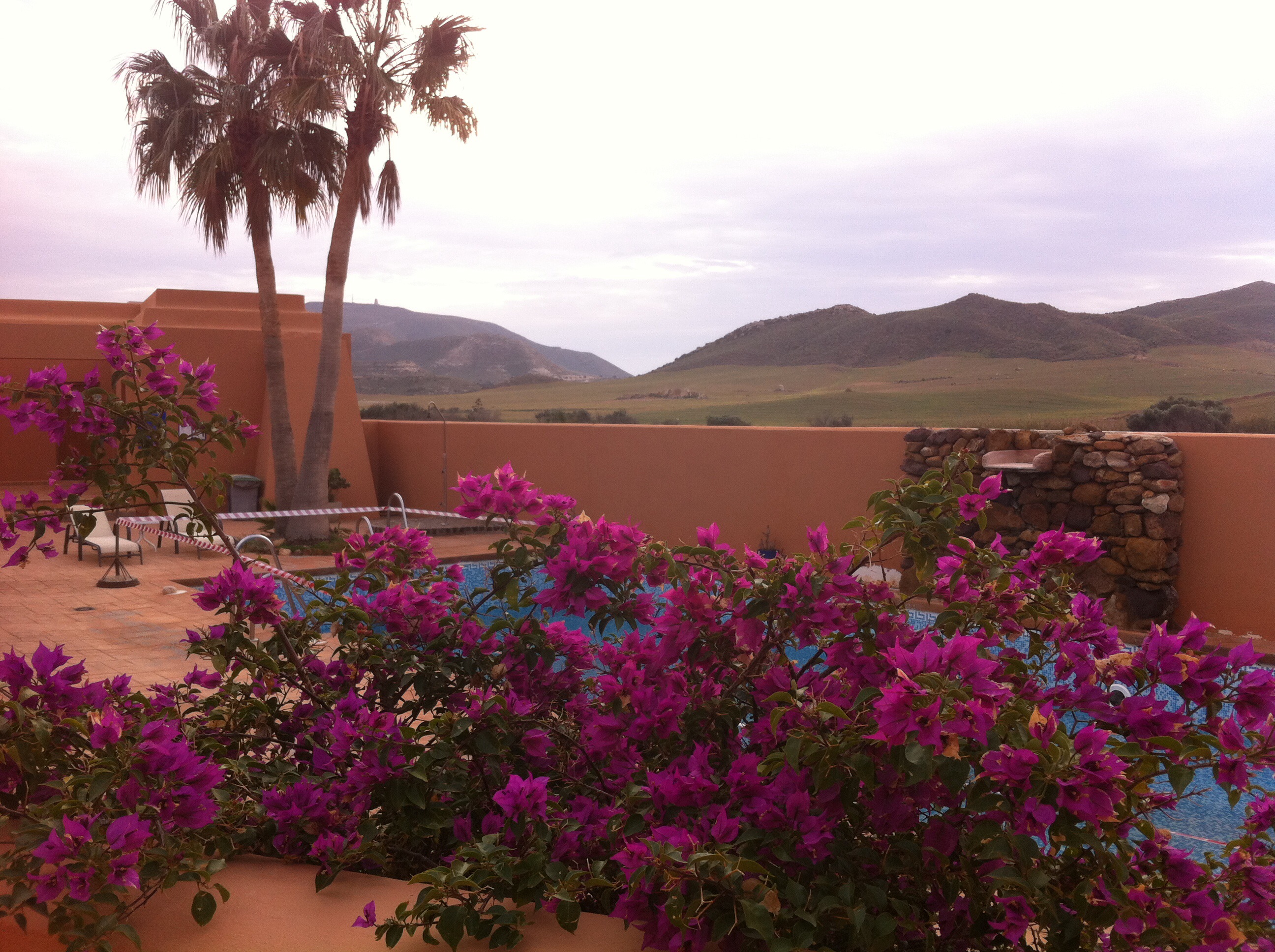 The hotel was an oasis of tranquility. In the middle of nowhere, the only sound was the trickling water in the patio fountain. For no apparent reason, the receptionist threw in a spa circuit with my overnight stay, which was a blissful way to relax. That night the enormous bed was a soft sea of white, the light feather duvet enfolding me as I drifted off listening to the fountain.
The hotel was an oasis of tranquility. In the middle of nowhere, the only sound was the trickling water in the patio fountain. For no apparent reason, the receptionist threw in a spa circuit with my overnight stay, which was a blissful way to relax. That night the enormous bed was a soft sea of white, the light feather duvet enfolding me as I drifted off listening to the fountain.
The following day my road turned inland, through the strange volcanic desert 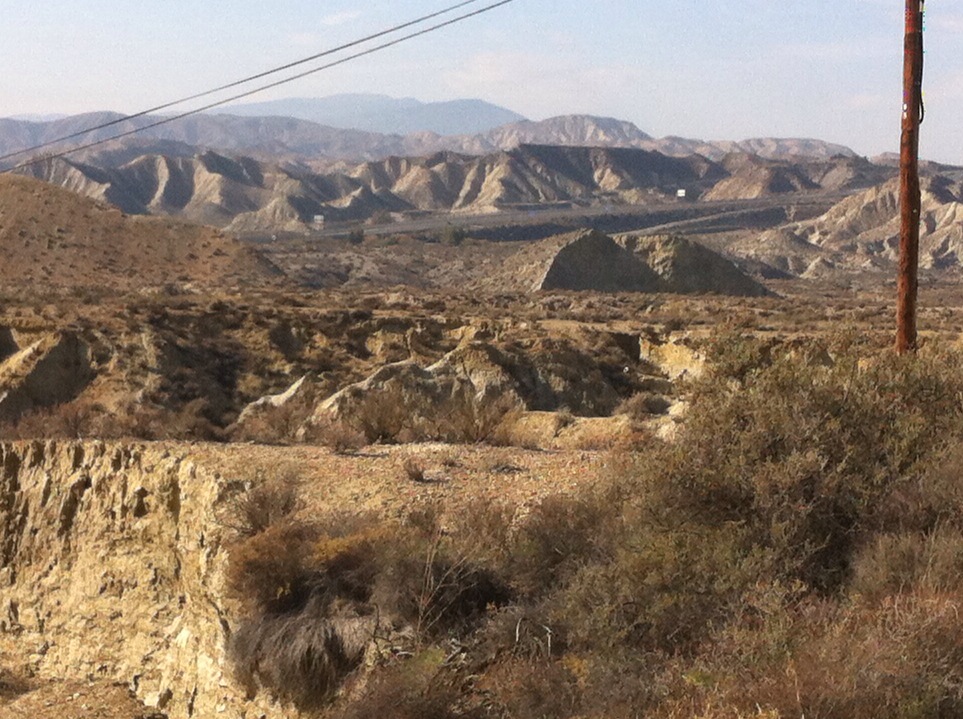 landscape. Roadside restaurants offered "cowboy movie experiences". Old spaghetti western film-sets had been converted to tourist attractions. Driving across the bleak "Desierto de Tabernas" I shivered - it wasn't cold, but it felt very inhospitable. Across the plain, a sea of white wind turbines turned elegantly. The road curled around the north of the Sierra Nevada - a sea of white ice, glistening in
landscape. Roadside restaurants offered "cowboy movie experiences". Old spaghetti western film-sets had been converted to tourist attractions. Driving across the bleak "Desierto de Tabernas" I shivered - it wasn't cold, but it felt very inhospitable. Across the plain, a sea of white wind turbines turned elegantly. The road curled around the north of the Sierra Nevada - a sea of white ice, glistening in 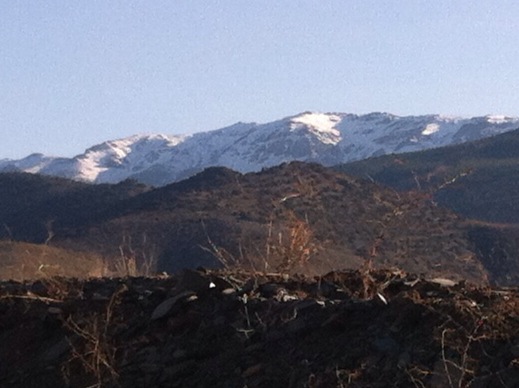 the sun thousands of metres above.
the sun thousands of metres above.
Only a two-day break, but it felt like longer. After the miles upon miles of poly-tunnels, then the miles upon miles of desert, the lush green Axarquía with its soft rolling hills and fertile slopes is as welcoming as ever. It's lovely to travel. It's even nicer to return home.
© Tamara Essex 2015 http://www.twocampos.com
THIS WEEK'S LANGUAGE POINT:
Another beginners’ lesson that I seem to have missed is about referring to yourself.
Lo he hecho por mi misma – I did it myself.
¿Lo hiciste tu mismo? – Did you do it yourself?
Ella lo hizo por si misma – She did it herself.
Nosotros lo hicimos por nosotros mismos – We did it ourselves.
Vosotros lo hicisteis por vosotros mismos – You did it yourselves (familiar).
Ellos lo hicieron por si mismos – They did it themselves.
And no, I have no idea why the “tu” form misses out the “por” but I am reliably informed that it does!